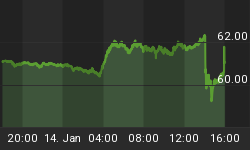8/17/2010 9:10:53 AM
Trade Recommendations:
Take no action.
Daily Trend Indications:

- Positions indicated as Green are Long positions and those indicated as Red are short positions.
- The State of the Market is used to determine how you should trade. A trending market can ignore support and resistance levels and maintain its direction longer than most traders think it will.
- The BIAS is used to determine how aggressive or defensive you should be with a position. If the BIAS is Bullish but the market is in a Trading state, you might enter a short trade to take advantage of a reversal off of resistance. The BIAS tells you to exit that trade on "weaker" signals than you might otherwise trade on as the market is predisposed to move in the direction of BIAS.
- At Risk is generally neutral represented by "-". When it is "Bullish" or "Bearish" it warns of a potential change in the BIAS.
- The Moving Averages are noted as they are important signposts used by the Chartists community in determining the relative health of the markets.
Current ETF positions are:
DIA: Short at $105.19
QQQQ: Short at $45.91
SPY: Short at $110.65
Daily Trading Action
The major index ETFs saw another gap down open. The bulls were ready, and after allowing the bears to push the major indexes lower for the first couple of minutes of trading, began to apply buying pressure and the major indexes rose through the morning and move into positive territory. In the final fifteen minutes of the lunch hour, the bears reasserted control and moved the major indexes back into negative territory. With forty-five minutes left in the session, the bulls once again reasserted themselves and forced the major indexes to close near the unchanged mark with the NASDAQ and NASDAQ-100 closing in positive territory and the Dow and S&P-500 closing in negative territory. The Russell-2000(IWM 61.56 +0.49) and the Semiconductor Index (SOX 324.26 +1.48) joined the NASDAQ-100 in leadership with positive closes. The Bank Index (KBE 22.83 -0.03) and the Regional Bank Index (KRE 22.09 +0.14) were split. The NASDAQ Composite, the Semiconductor Index, and the Russell-200 all bounced off of support. None of the equity indexes we regularly monitor broke to new lows. The 20+ Yr Bonds (TLT 104.85 +2.56) soared to a new 52-week high. The long bonds haven't been this pricey at any other time except during the throws of the financial crisis. NYSE volume was anemic with just 784M shares traded. NASDAQ share volume almost the same as on Friday with just 1.609B shares traded.
There were three economic reports of interest released:
- NY Fed - Empire Manufacturing Index (Aug) came in at 7.10 versus an expected 7.50
- Net Long-Term TIC Flows (Jun) came in at $44.4B
- NAHB Housing Market Index (Aug) came in at 13 versus an expected 14
The first two reports were released an hour before the open. The other was released a half hour into the session. The NAHB Housing Market Index is at its lowest point in 17-months but has been below 50 (the neutral point) since 2006.
U.S. futures markets took their queue from Japan's GDP report which showed a worse than expected +0.4%. European markets had already reacted negatively to Japan's GDP reading and this carried over to U.S. markets at the open. From that point, it was an entirely different story as the bulls asserted themselves deciding that the discount received from the lower open was sufficiently enticing to launch bids.
Materials (+0.5%), Tech (+0.4%), Utilities (+0.1%), and Energy (+0.1%) moved higher while Healthcare (-0.4%), Telecom (-0.3%), and Financials (-0.2%) moved lower. The other three sectors in the S&P-500 were unchanged.
Implied volatility for the S&P-500 (VIX 26.10 -0.14) fell fractionally while the implied volatility for the NASDAQ-100 (VXN 27.08 -0.99) fell three and a half percent.
The yield for the 10-year note fell eleven basis points to close at 2.58. The price of the near term futures contract for a barrel of crude oil fell fifteen cents to close at $75.24.
Market internals were mixed with advancers leading decliners nearly 5:3 on both the NYSE and the NASDAQ. Down volume led up volume modestly on the NYSE while up volume led down volume 3:2 on the NASDAQ. The index put/call ratio fell 0.35 to close at 1.14. The equity put/call ratio rose 0.05 to close at 0.72.
Commentary:
Monday's trading action saw the leading indexes lead equity indexes higher. The bank indexes were split as were the major indexes but the lower closes of the major indexes were nearly flat. The stage is set for an attempt to move U.S. markets higher. Once again, U.S. markets bounced from the lower open. Perhaps the bulls will try to create more of a bounce on Tuesday and we will watch to see how successful they can be. Of course, the bears may counter a stronger open with an immediate challenge to move back toward the mean, but this can't be know until we see trading action.
With the leading indexes leading U.S. equities higher, we are inclined to give the bulls the benefit of the doubt. In addition, we have the market for long-term U.S. government debt at nosebleed levels. If this bubble bursts after the Fed begins buying treasuries on Tuesday, this could fuel a move from fixes income to equities which could empower a bullish advance for equities. A bounce that results in a higher close has been overdue so we will watch trading action on Tuesday to see if it will be meaningful.
We hope you have enjoyed this edition of the McMillan portfolio. You may send comments to mark@stockbarometer.com.
















